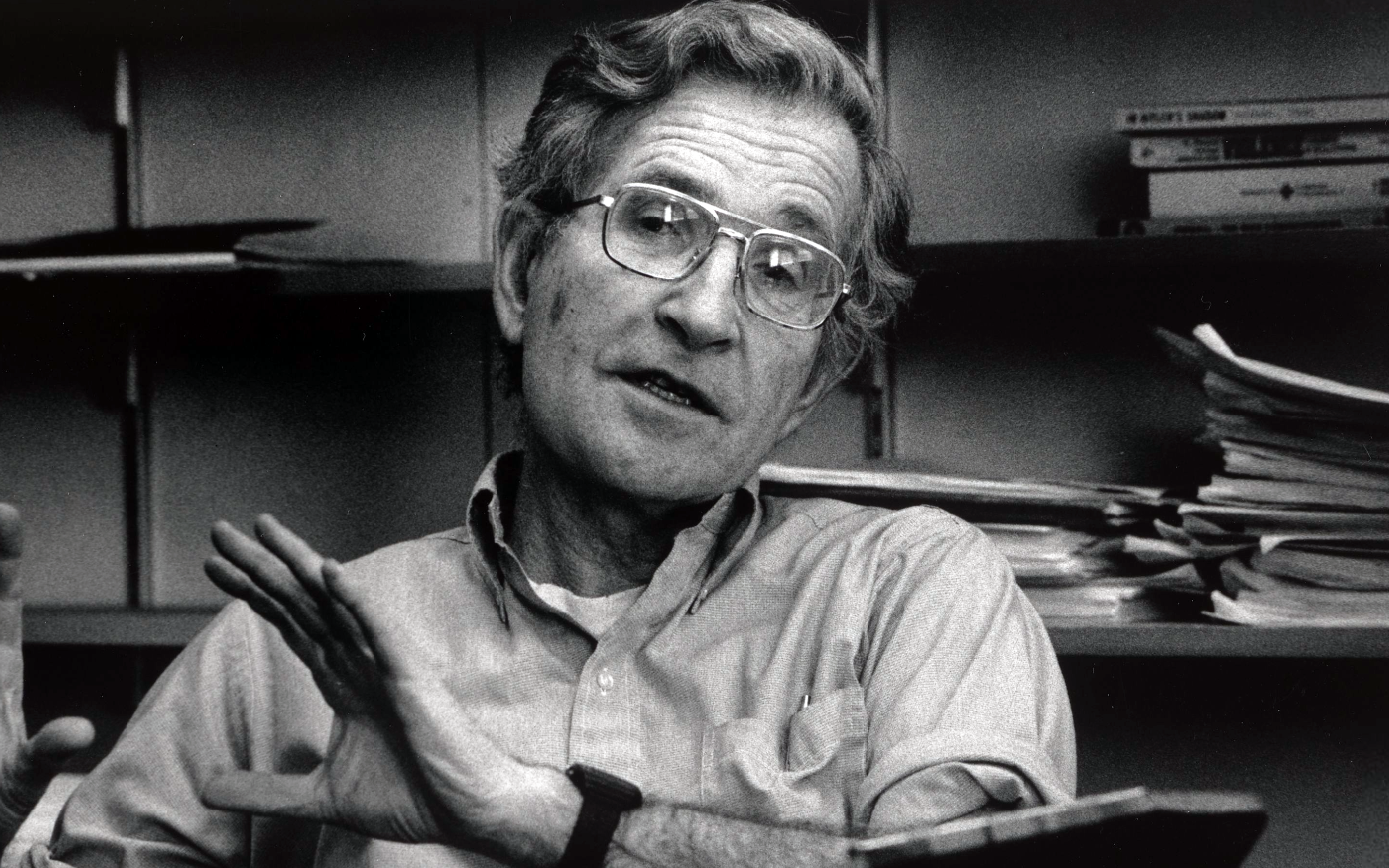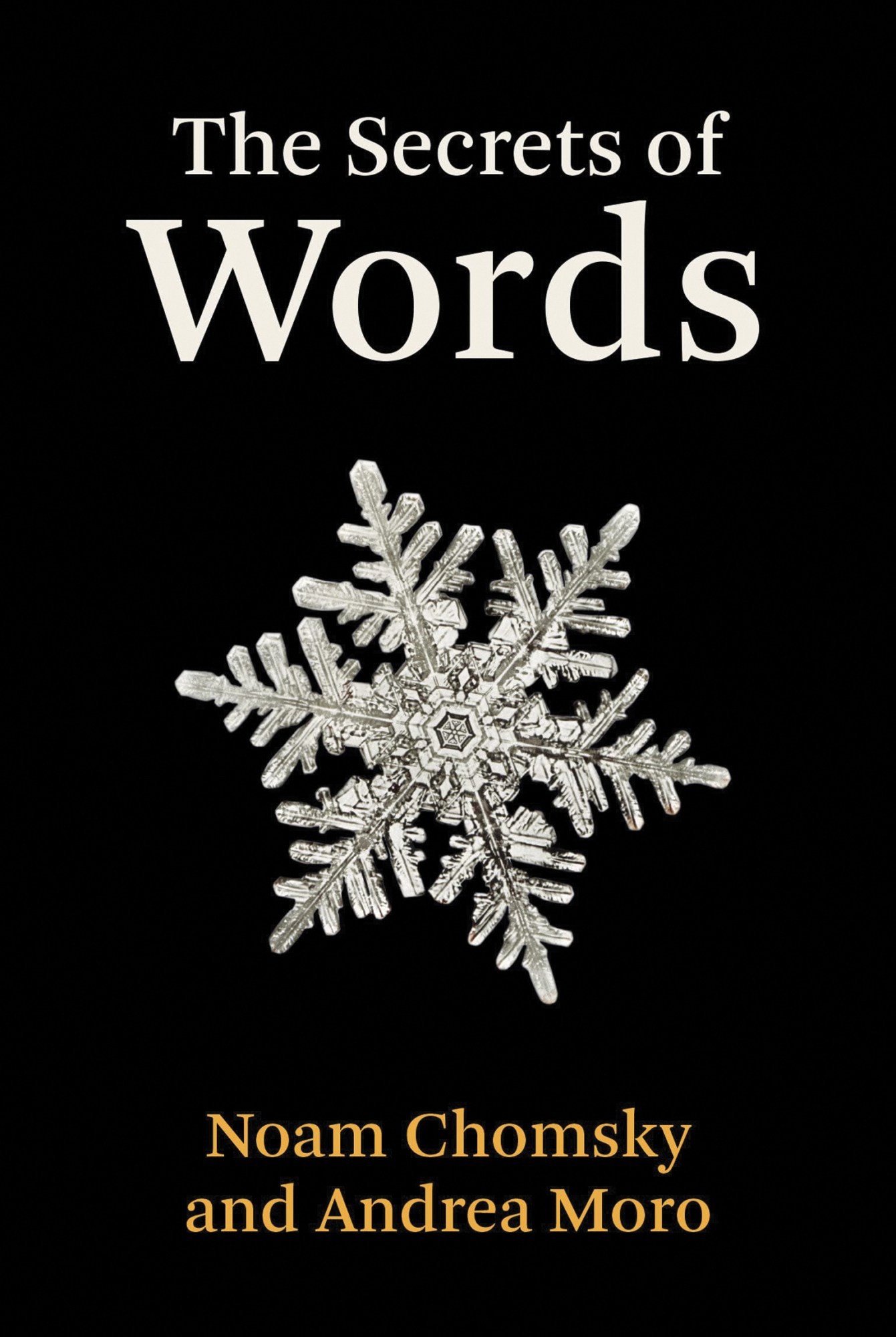Flesh became words
Noam Chomsky and a fellow linguist who is also a neuroscientist converse on history, knowledge, language, brain science, technological euphoria, and “whether we can know everything.”

Noam Chomsky, MIT professor of linguistics emeritus, and Andrea Moro, professor of general linguistics at the Institute for Advanced Study (IUSS) in Pavia, Italy, engaged in a provocative conversation in July 2021 that they’ve now expanded into a book, The Secrets of Words, due out in May from MIT Press.

“For me, our conversation was sheer pleasure,” Chomsky says. “It’s exciting to be able to engage with an inquiring and original mind on shared interests and ongoing research that both of us see as perhaps able to lift a few veils from the mysteries of language and thought—the core properties of our strange species.”
Moro designed neuroscientific experiments, initially revealed in his 2016 book, Impossible Languages, that empirically proved Chomsky’s theory of generative grammar—the idea that human language was created by innate structures of the brain. As Moro says, “It’s not that ‘The Word’ became flesh, but flesh became words.”
“Andrea’s inversion of the phrase in the Gospels brings to mind what’s known in the history of Western philosophy as ‘Locke’s suggestion,’” says Chomsky. “As Locke put it, after ‘the incomparable Mr. Newton’ had shown, to his dismay, that God had ‘annexed effects to motion, which we can in no way conceive motion able to produce,’ we are left with the possibility that God might have chosen to ‘superadd to matter a faculty of thinking.’ Stripping aside the theological framework, as was done in the years that followed, we reach the conclusion that those properties ‘termed mental’ are the result of ‘such an organical structure as that of the brain,’ [in the words of] Joseph Priestley.”
The conclusion: “Flesh becomes word.”
“If this is true,” Moro adds, “it can’t be the case that the simulation that engineers perform while constructing a talking machine allows us to better understand the brain. The crucial separation is between ‘simulate’ and ‘comprehend.’ Engineers simulate; we try to comprehend.”
“The eye sees the stars, and the brain sees the constellations,” Moro explains. “The ear hears the words, and the brain hears the sentences. It’s like symphonies: it’s the brain that puts everything together.”
Asked whether The Secrets of Words has a humanist message, Moro demurs, “The opposition between humanism and science was functional to the emancipation of science from theology. But now I think that the terms ‘humanism’ and ‘science’ are an obstacle to understanding reality. It seems to me that those terms divide what seems to be more united than ever: there can’t be a real distinction between what is human and what is real. And so we have a new challenge: to abandon this dichotomy—humanistic and scientific—and reconcile them methodologically, epistemologically. We have to use all tools to understand reality.”
Chomsky and Moro celebrate how science has changed and what humans have learned. They also value the puzzles, surprises, mysteries, and secrets that remain—some of which may persist.
Recent books from the MIT community
A Shot in the Arm: How Science, Engineering, and Supply Chains Converged to Vaccinate the World
By Yossi Sheffi, professor of civil and environmental engineering and engineering systems and director of the Center for Transportation Logistics
MIT CTL Media, 2021, $9.99
The New Breed: What Our History with Animals Reveals about Our Future with Robots
By Kate Darling, research specialist at the MIT Media Lab
MACMILLAN, 2021, $14.99
Insurance Era: Risk, Governance, and the Privatization of Security in Postwar America
By Caley Horan, associate professor of history
UNIVERSITY OF CHICAGO PRESS, 2021, $40.00
Life-Destroying Diagrams
By Eugenie Brinkema, associate professor of literature
DUKE UNIVERSITY PRESS, 2022, $31.95
Unintended Lessons of Revolution: Student Teachers and Political Radicalism in Twentieth-Century Mexico
By Tanalís Padilla, professor of history
DUKE UNIVERSITY PRESS, 2022, $28.95
From Darkness into Light: My Journey Through Nazism, Fascism, and Communism to Freedom
By Robert Ratonyi ’63
FULTON BOOKS, 2022, $19.95
Keep Reading
Most Popular
Large language models can do jaw-dropping things. But nobody knows exactly why.
And that's a problem. Figuring it out is one of the biggest scientific puzzles of our time and a crucial step towards controlling more powerful future models.
How scientists traced a mysterious covid case back to six toilets
When wastewater surveillance turns into a hunt for a single infected individual, the ethics get tricky.
The problem with plug-in hybrids? Their drivers.
Plug-in hybrids are often sold as a transition to EVs, but new data from Europe shows we’re still underestimating the emissions they produce.
Stay connected
Get the latest updates from
MIT Technology Review
Discover special offers, top stories, upcoming events, and more.